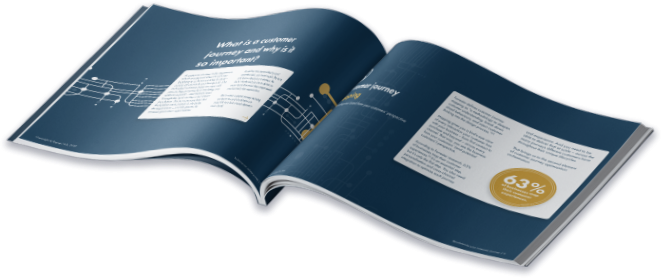How many times have you phoned up your utility or broadband supplier with a problem – only to be told by the apologetic customer service rep on the phone that they don’t have access to the account data required to resolve your issue?
As customers, moments like these are incredibly frustrating. We don’t care why the person we’re speaking to doesn’t have access to the right systems. We just want the issue resolved as quickly and seamlessly possible.
As a business, you can combat these frustrations by ensuring all your data is connected throughout the customer journey. But how exactly do you achieve this when those journeys are generally long and complex?
Step 1: Map your customer journey
To figure out how to connect your data, you first need to understand the ins and outs of your customer journey.
This can be a daunting task – and there a wide array of tools and templates out there to help you. But remember: no 2 customer journeys are the same, so while templates can be a useful starting point, it’s okay to deviate from it.
It can be helpful to divide your customer journey into stages, where applicable. Common stages include awareness, consideration, purchase, retention and advocacy. And keep it simple to begin with. Don’t worry about all the little variations and different routes a customer could take, just look at what your standard journey is from start to finish.
The process of mapping your customer journey out also give you a good opportunity to think about the effectiveness for the systems you currently have in place. For example, are customers acquired through organic search more likely to become advocates for your brand than customers acquired through social media advertising?
Step 2: Understand your customer goals
To ensure you connect the right data, you need to understand your customers’ goals at each stage of the journey. This isn’t necessarily what you want them to do, but rather what they want to do.
Goals will vary depending on the stage and the customer’s ‘age’. A new customer, for example, is likely to want to understand how the product works; whereas an existing customer may be looking for the quickest way to resolve a problem or even log a complaint.
When you’re clear on the objectives, you can then look at ways to help customers meet them in the easiest way possible.
Step 3: Know who’s in the driving seat
Next, go through the customer journey and look to see which stages are created by you and which are created by the customer.
When a customer makes a purchase at the beginning of the journey, for example, they are ‘pushing’ the journey along by providing you with data. When you email them to ask them to rate their experience, however, they’re being ‘pulled’ along by you and your desires.
Understanding the push vs. pull factors will help you iron out any sticking points – and can highlight which pieces of data can and should be connected to optimise the customer journey for both you and the customer.
Step 4: Get everyone involved
No one person ‘owns’ customer experience and the customer journey. Every area of the business is involved throughout the lifetime of a customer, and is therefore able to provide unique insights into how the journey works and where improvements could be made.
When mapping your customer journey and looking at the data that needs to be connected, talk to people across departments to get their perspective. A customer service agent, for example, might be able to tell you that customers regularly ring and request information they’re unable to provide; while those in the warehouse will be able to tell you what information they need to ensure an order is processed and shipped out as smoothly as possible.
By looking at your customer journey in this much detail, you can not only understand how your data needs to be joined together – but you can also spot any problems or gaps in your existing customer journey and rectify them.
Learn more about customer journeys in our recent whitepaper. What to see Customer Journey Tracker in action? Get in touch to book a demo.

